Five Audio Systems
August 23, 2008
Last year, I wrote a little about one of my hobbies, which is to make silly machines that play music.
July 15, 2007: Give Yourself the Gift of Music
This year, let’s look at five “example” systems, ranging in price from “I’m a graduate student of Polish history” to “I’ve got the dough, so let’s have some fun.” The vacuum tubes/horns theme is strong here. Not that there aren’t other solutions … but this is as good a place as any to start.
System One: Cheapo-Exotic
Source: iPod, etc.
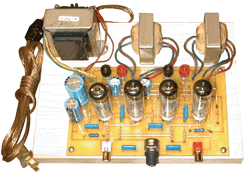
Amplifier: K-502 kit (www.tubesandmore.com, $195). Eight watt vacuum tube amplifier. Optional: NuForce Icon. ($250)
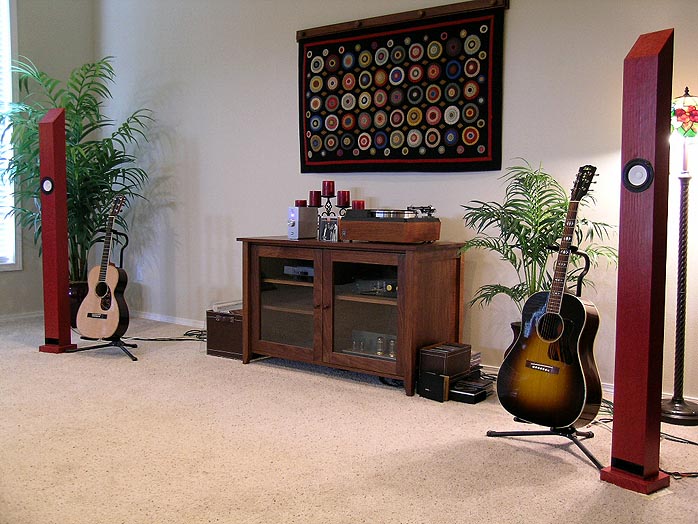
Speakers: Fostex FE-103 Zigmahornet. About $125. (Google it.)
Total cost: About $350.

Result: Tiny Garden. This is a small system. That can be fine for someone with a small room, like an urban apartment. Systems like this can sound fantastic with small-group jazz, vocals, or popular acoustic music. When you play Wagner or Metallica, though, it becomes very clear that you’re listening to a 3″ paper disc. Still, you can have a lot of fun with this sort of thing, and I did for several years.
System Two: Classic Tubemeister
Source: Technics SP-1200 turntable. (www.kabusa.com, about $450).

Amplifier: Reconditioned Scott tube receiver with phono stage. (www.mapleshaderecords.com, about $1200).
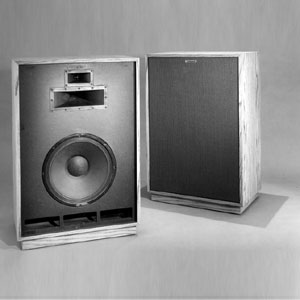
Speakers: vintage Klipsch Cornwall. (About $900 used. Look in ebay or Craigslist, etc.) Also Altec Model 19, Altec Valencia, Tannoy, etc.
Total cost: about $2600.

Result: Classic ’60s Rock-n-Roll sound. This all-vinyl system will put a big smile on your face, with a warm combination of tubes and the 12″ black discs. This sort of amplifier is basically what guitarists use, and the speakers are not too different from PA gear. The Technics turntable is really a late-70s or 1980s device, still in production as it is much beloved by DJs everywhere. A super-bargain, and living-room friendly. Some things never go out of style.
System Three: Neo-Retro Big Horn Rig
Big horns is a theme here, and with System 3 we cross the line of what most women would consider acceptable in a living room (unless you have a real big living room). It is an upgrade of System 2, with more refined electronics and more ambitious speakers.
Source: various digital or Technics SP-1200. (About $500.) Or, upgrade to Garrard 301.
Phono: Bottlehead Seduction kit. ($280, www.bottlehead.com)
Pre: Bottlehead Foreplay kit. ($430, www.bottlehead.com)
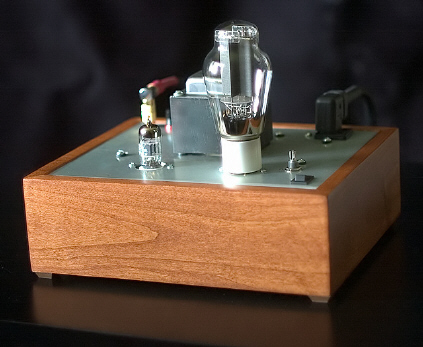
Amp: Bottlehead Paramount 300B kit. ($1250, www.bottlehead.com)
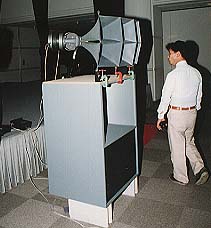
Speakers: Altec A5 (or A7). (About $1500 used. Look locally.)
Total cost: About $5000.
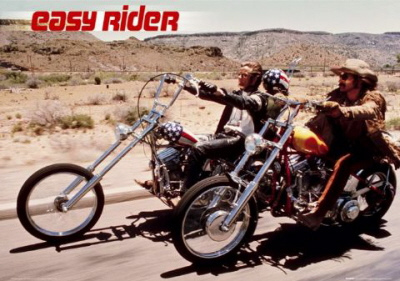
Result: Wind in your hair! The big Altec A5s were installed in thousands of movie theaters in the 1950s and 1960s, which means there are a lot of them out there, which has kept their price relatively cheap. They represent a phenomenal value for under $2000. If you saw Easy Rider when it first came out — you were probably listening to an Altec/tubes rig. The electronics are a step up from the vintage Scott in terms of refinement, as they are based on … the 300B tube, which dates from the 1930s. This generates a whopping eight watts. However, with the superefficient speakers, this will rock the block in a fashion that your neighbor’s 500W/cones-and-domes speakers never will. Plus, you will have to make the electronics yourself (they’re a kit), which is sort of like having a custom motorcycle without the health risk. These kinds of neo-retro systems started a revolution in audio in the late 1980s and early 1990s — they sounded better than anything made at the time (mostly itchy-scratchy solid state electronics with inefficient box speakers), and also better than the vintage 1960s stuff.
System Four: Junkyard Special
So far, we’ve had an organized, planned, balanced approach to system building. Now, we see what happens when you just pick things up here and there, and try to make them work together.
Source: DIYParadise Monica 3 DAC (battery powered), runs from iTunes. (www.diyparadise.com, $150)
Pre: Sowter transformer attenuator. (www.sowter.co.uk, $250 including chassis, switches etc.)
Amp 1: Welborne Labs Moondog 2A3. (3 watt 2A3 SET, about $1300.)
Amp 2: DIYParadise Charlize (battery powered). (6 watt tripath-based, www.diyparadise.com, $120)
Amp 3: SAE DM-Mark IV. (1980s 100W solid state, about $500 used today.)
Electronic crossover: Behringer CX-2100
Speakers: Western Electric 720A drivers on 125hz horn; Fostex tweeter; RCA MI-9462 “Ubangi” bass horn with Altec 515G, Eclipse 2×15″ subwoofer.
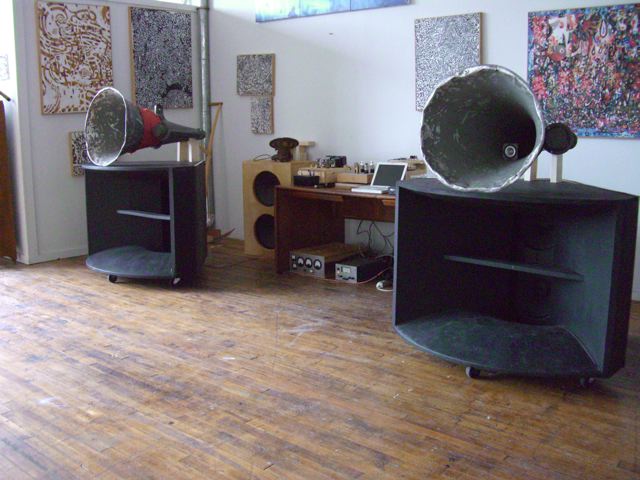
Total cost: about $6000

Result: Natural Wonder. This is what I’m listening to now. Don’t bother if you have a “normal size” room. The full horn rig gives tremendous scale and reserve, while the refined tube electronics offer a moist, delicious, naturalistic tone. Like an unspoilt redwood grove. The 2A3 triode amps are hooked directly to the late-1930s Western Electric drivers, by way of a line-level passive crossover. The “Ubangi” basshorns date from the 1950s. With the superefficient horns, three watts is enough to tear your ears off. The basshorns and subwoofer are taken care of by the Behringer electronic crossover. The subwoofer and tweeter fill in the extremes where Altec A5-type systems are normally weak. Lots of fun, and not really all that expensive. Will kick sand in the face of most anything you can buy in a store, at any price (including $50,000+). Don’t bother trying to replicate this system as-is. The parts are too hard to obtain. With a little junkyard (eBay) browsing, you can find your own solution.
System Five: Mass Overkill
Okay, I know. $5K for a system is … not quite expensive enough … and you want something ambitious. There are any number of people who will take your money — $100K, $250K, whatever — and give you something in return. This system represents about the best you can reasonably hope for, at the present day, at any price.
Source: ModWright modified Slim Devices Transporter digital music system (runs off your computer network). About $3500. (www.modwright.com)
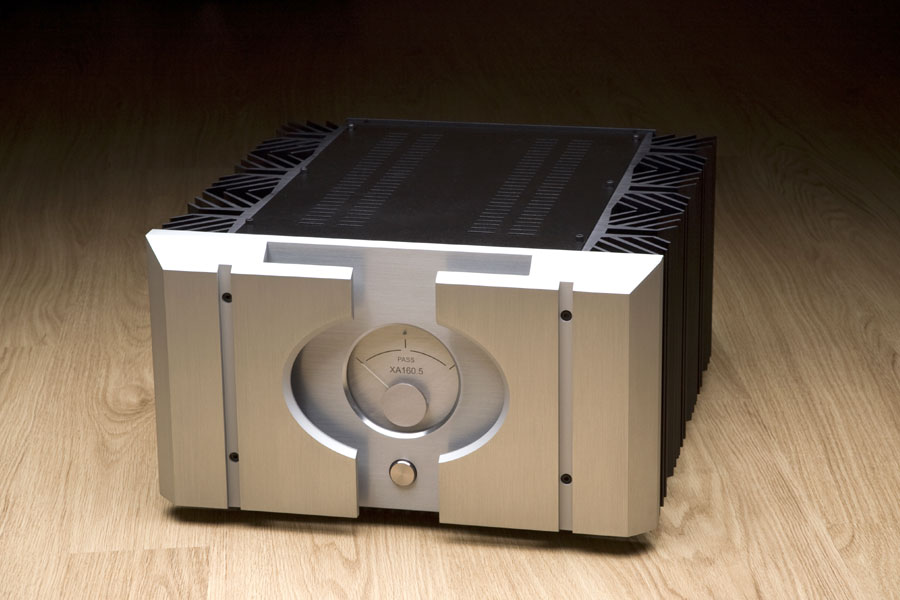
Amplifier: Pass XA160.5 or X1000.5, Bel Canto e.One Reference 1000, or other refined big-power solid-state. (150-1000 watts, $4000+. www.passlabs.com)
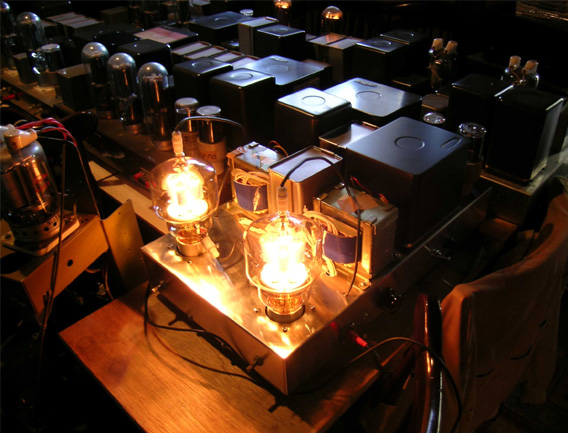
Amp (tube alternative): Eimac 304TL push-pull. (100+ watts, custom commission only, $10K+)
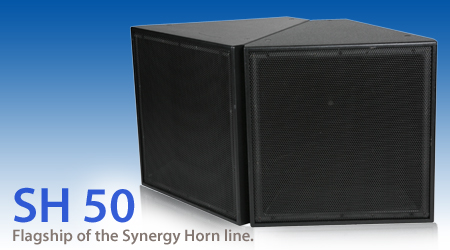
Speakers: Danley Soundlabs SH-50, plus DTS-20 subwoofer. About $12,000 total. (www.danleysoundlabs.com)
Total cost: $20,000+

Result: Whoa! Spending $20,000 to play music is silly, but so is a $75,000 car. My advice: get the $55,000 car and spend $20,000 on this system. You can spend much more — 10x more — but you won’t necessarily get much better than this. The heart of this system is the Danley SH-50 speakers, the ugly triangular black boxes. Tom Danley is the Albert Einstein of speaker making — probably the most talented designer of his generation. While most speakers are repetitions on themes from 30 or 70 years ago, Danley has been discovering what amounts to new laws of audio physics, which allow him to pack a full-size horn rig into a very small space. (They are about 28″ on a side, and accomplish the same thing as the Ubangi basshorns, which are 50″ wide.) In addition, the whole thing is time- and dispersion-coherent, a Holy Grail of horn speaker design which has not been achieved before in the last 80 years of trying. You could run this on an 8-watt 300B SET amplifier, as before, with wonderful results. However, this speaker can deliver absurd output (it’s designed for stadium rock concerts, among other things), so let’s cut it loose here with a big-power amplifier of at least 100 watts. Today’s solid-state amplifiers are worlds better than those of twenty years ago, due to the competition provided by the resurgence in vacuum tubes. Nelson Pass makes some of the best. Or, you can try the bleeding edge digital amps, with the Bel Canto based on a unit by — can you believe it? — Danish “lifestyle system” purveyors Bang & Olufsen. I’ve added a vacuum-tube alternative for the steadfastly contrarian. This basic tube design could be scaled up to 1000 watts. But, for output over 150 watts, solid-state is usually the way to go. Maybe a bit less tonal refinement here than in some other options, more than compensated for by technical capability. Poise, control, and power. Mass power. Did I mention — power? Make sure you live in a place where you can turn it up for this one, whether full-scale orchestral, rock or whatever. Note: the power comes from the speakers, not the amplifier. You can hook up a 1000W amplifier to a typical cones-in-a-box speaker, and end up with overdriven-cones-in-a-box sound.
* * *
Here’s a bit of info of my previous claim: that workers in the 19th century worked harder, longer than at just about any time in history.
http://groups.csail.mit.edu/mac/users/rauch/worktime/hours_workweek.html#hours
* * *
I did a presentation recently for a group of businessmen. In the spirit of Matt Simmons, here’s the powerpoint, in .pdf format:

